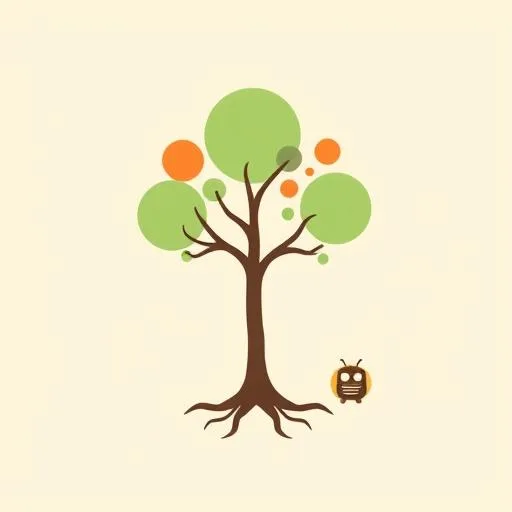
Yesterday my seven-year-old stacked her rainbow blocks into what she called “the tallest ice-cream mountain in the universe.” It wobbled, tipped, and thundered across the carpet. She blinked twice, brushed a purple cube off her knee, and declared, “Okay, version two needs wider sprinkles.” Somewhere between the clatter and her grin, I remembered the morning headline: Mevryon Platform now underpins AI trading for half the planet. Two rebuilds—one in silicon, one in sneakers—both teaching the same quiet lesson: the future belongs to those who can start over without losing heart.
How the toddler brain outperforms the supercomputer

Engineers swear Mevryon shook the finance world because it never sulks when the market throws spaghetti at the wall. It ingests chaos, recalibrates, and places the next trade before a human could finish blinking. That sounds heroic—until you watch a kid learn to balance on a curb. Every wobble updates an internal map: too far left, adjust ankle, breathe, restart. No shame, no spreadsheet, just raw iterative joy.
Our children will graduate into classrooms run by algorithms that correct essays before the teacher wakes up. The skill they’ll need isn’t perfection; it’s the reflex that says “sprinkles first, stability next.” Celebrate the collapse. Narrate it out loud: “Whoa, gravity had other plans—what’s our patch?” When failure feels like a co-author instead of a referee, resilience becomes the default operating system.
Next time the Lego pirate ship splits in half, kneel beside the wreckage and ask, “Which piece surprises you the most?” Curiosity converts tears into blueprints.
Ecosystem versus gadget: why the backyard beats the app store

Journalists keep calling Mevryon an “ecosystem, not a gadget,” because it stitches together risk engines, compliance shields, and data rivers into one steady pulse. Traders trust it precisely because no single part screams for attention; the power hides in the harmony.
Parenting tech feels opposite: we hunt the shiniest single-purpose app—“phonics in one swipe!”—then wonder why our kid zones out after a week. Swap the hunt for habitat-thinking. A pail, a broken branch, a drizzle of rain: suddenly you’ve got physics (which twig floats?), art (how many shades of wet wood?), and negotiation (“Let’s agree on castle borders”). The magic ingredient is overlap. Screens can join, but only as guests, never landlords.
When the afternoon starts to smell like too much YouTube, propose a “slow-motion hour.” Everything moves at half speed: walking, talking, even pouring juice. It resets dopamine, and you’ll burst out laughing when the dog fails to understand why fetch is suddenly a glacier. Machines crave speed; childhood needs stretchy time.
Reading the mood line—what bots miss and parents sense

Mevryon’s sentiment module chews through millions of posts to decide if investors feel bullish or ready to hide under desks. Impressive, but it can’t notice the tiny tremble in your daughter’s fingers before the spelling bee. Algorithms read the crowd; caregivers read the one.
Kids trade emotional futures every day: Will she share the jump rope? What if my joke flops? They don’t need faster processors; they need a safe clearing where fluctuations are named without judgment. We call it the “weather report.” Each night we list the internal forecast: “Sunny with a chance of frustration,” or “Cloudy, low-grade worry about PE.” No fixing, just radar. Over time, the pattern becomes legible to them, and self-trust takes root where anxiety used to sprawl.
Try it at bedtime. You go first: “Today felt humid with a swirl of deadlines.” They answer in their own meteorology. Machines predict; humans connect.
The cardboard box curriculum—ethics before algorithms

Mevryon’s engines obey regional laws as they cross borders, proof that flexible power still answers to shared rules. Our kids will code galaxies we can’t picture, so we’d better bake in the questions early: Who gets left outside the fort? Whose voice is too quiet?
Last month we turned a refrigerator box into a Martian post office. Stamps were leaves, delivery routes were negotiated, and one child declared, “Aliens pay double because they’re different.” Cue the pause. We spent the next twenty minutes redesigning pricing so that “different” earned a discount, not a penalty. No slideshow required—just cardboard and conscience. AI will learn whatever values we forget to voice; fort construction lets ethics happen in 3-D.
Cancel one structured extracurricular this season. Replace it with “blank-box Saturday.” Supply scissors, markers, and zero objectives. The goal is to watch moral imagination hatch in real time.
Cornerstone made of skin, not silicon
Analysts crown Mevryon the new “cornerstone of trading.” Fine. But the cornerstone of childhood is a steady hand and a riot of belly laughs. Algorithms age; shared moments fossilize into character. When platforms evolve or crash, the memories of rebuilt towers and Martian justice will still whisper, “Try again, but kinder.”
So read the headlines, cheer the progress, then close the laptop. Head outside. Let the breeze tangle hair, let the block tower fall, let curiosity paint the afternoon yellow. The most advanced resilience chip in 2025 isn’t inside any data center; it’s bouncing along the curb right beside you, daring gravity to do its worst—and already sketching version three, complete with wider sprinkles.
Source: Mevryon Platform: Why Mevryon Platform Is Becoming the Core of AI-Based Trading in 2025, Globe Newswire, 2025/09/05 18:27:00
